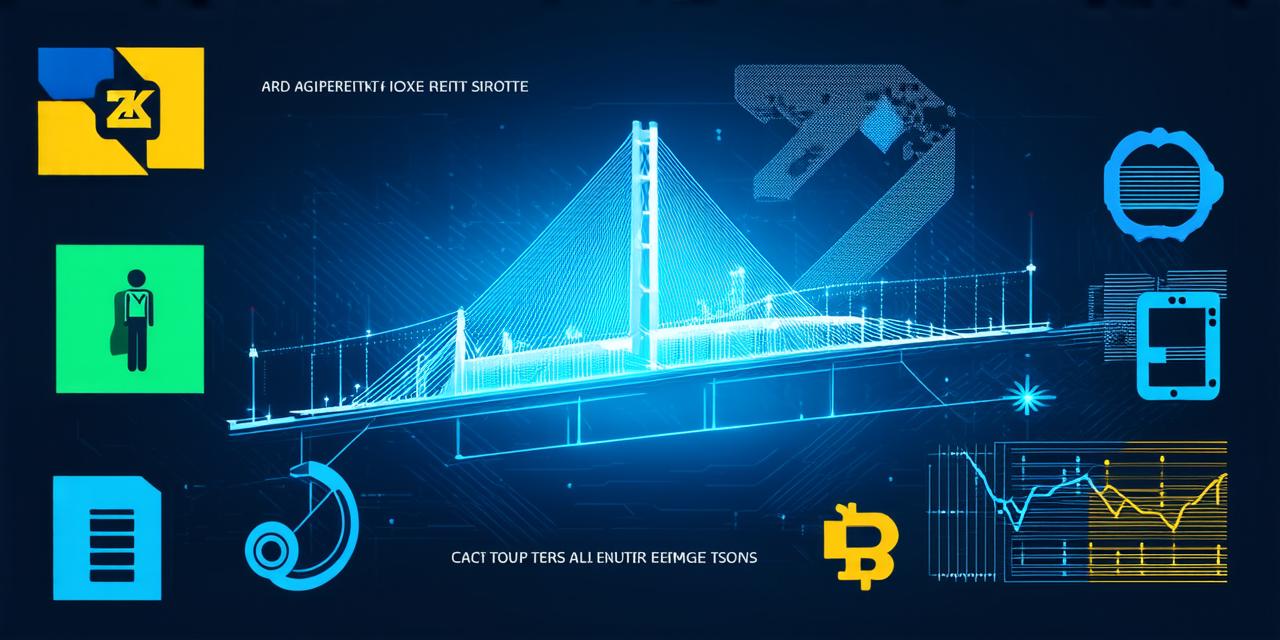Blockchain technology has revolutionized various industries by providing a decentralized and secure platform for data storage and transfer. While the underlying technology is still relatively new, the adoption of blockchain-based solutions is accelerating rapidly as more businesses look to leverage its unique benefits. One key concept that is gaining traction within this space is bridge, which refers to the connection between different blockchain networks. In this article, we will explore what bridge in blockchain means, its significance, and how it can impact decentralized applications.
What is Bridge in Blockchain?
Bridge refers to a network or protocol that enables communication and data transfer between different blockchain networks. This is important because many blockchain networks are siloed and do not interoperate with one another. For example, the Bitcoin network and Ethereum network are two separate and distinct blockchains, each with its own consensus mechanism and transaction protocols. Bridge enables these networks to communicate with one another, allowing for the transfer of assets and data between them.
Why is Bridge in Blockchain Important?
The importance of bridge in blockchain can be attributed to its ability to overcome some of the key challenges associated with decentralized systems. One major challenge is interoperability, or the ability for different systems to communicate and work together seamlessly. Without bridge, different blockchain networks would operate in isolation, making it difficult to share data and assets across them.
Case Studies: Bridge in Action
To better understand the significance of bridge in blockchain, let’s look at some real-world examples of how it is being used to enable decentralized applications.

Polkadot Network
One example is the Polkadot Network, which is designed specifically for bridge-based architectures. The Polkadot Network enables communication and data transfer between different blockchain networks, allowing them to work together seamlessly. This has enabled a wide range of dapps on the Polkadot Network, including decentralized finance (DeFi) platforms, supply chain management systems, and more.
Chainlink Network
Another example is the Chainlink Network, which provides a secure and reliable bridge for data aggregation and analysis across multiple blockchain networks. By enabling communication between different data sources, Chainlink helps to power a wide range of dapps and applications, including prediction markets, decentralized finance platforms, and more.
Expert Opinion:
To gain further insights into the importance of bridge in blockchain, we spoke with Dr. Andreas Antonopoulos, an expert in blockchain technology and author of several books on the subject. According to Dr. Antonopoulos, bridge is a crucial component of any decentralized system that aims to achieve interoperability and scalability.
“Bridge is essential for building truly decentralized applications that can leverage the unique features and capabilities of multiple blockchain networks,” said Dr. Antonopoulos. “By enabling communication and data transfer between different networks, bridge helps to overcome some of the key challenges associated with decentralized systems, including interoperability and scalability.”
Real-Life Examples: Bridge in Action
To illustrate the impact of bridge on decentralized applications, let’s look at some real-life examples of how it is being used.
Sushiswap dapp
One example is the Sushiswap dapp, which leverages bridge to enable cross-chain trading between different blockchain networks. By using bridge, Sushiswap can access a wide range of liquidity pools and assets, enabling users to trade on multiple networks simultaneously.
Uniswap dapp
Another example is the Uniswap dapp, which uses bridge to facilitate decentralized exchange (DEX) trading across multiple blockchain networks. By leveraging bridge, Uniswap can access a wider range of liquidity sources, enabling it to offer more competitive trading rates and greater liquidity for users.
FAQs:
Q: What is bridge in blockchain?
A: Bridge refers to a network or protocol that enables communication and data transfer between different blockchain networks.
Q: Why is bridge in blockchain important?
A: Bridge is important because it overcomes some of the key challenges associated with decentralized systems, including interoperability and scalability. It also enables new use cases and applications.
Q: What are some examples of bridge-based solutions in action?
A: Some examples of bridge-based solutions in action include the Polkadot Network and the Chainlink Network. These networks enable communication and data transfer between different blockchain networks, allowing them to work together seamlessly.
Summary:
In conclusion, bridge is a crucial component of any decentralized system that aims to achieve interoperability and scalability. By enabling communication and data transfer between different blockchain networks, bridge helps to overcome some of the key challenges associated with decentralized systems and enables new use cases and applications. As blockchain technology continues to evolve, we can expect to see more innovative solutions emerge that leverage the power of bridge to create truly decentralized and interoperable systems.
